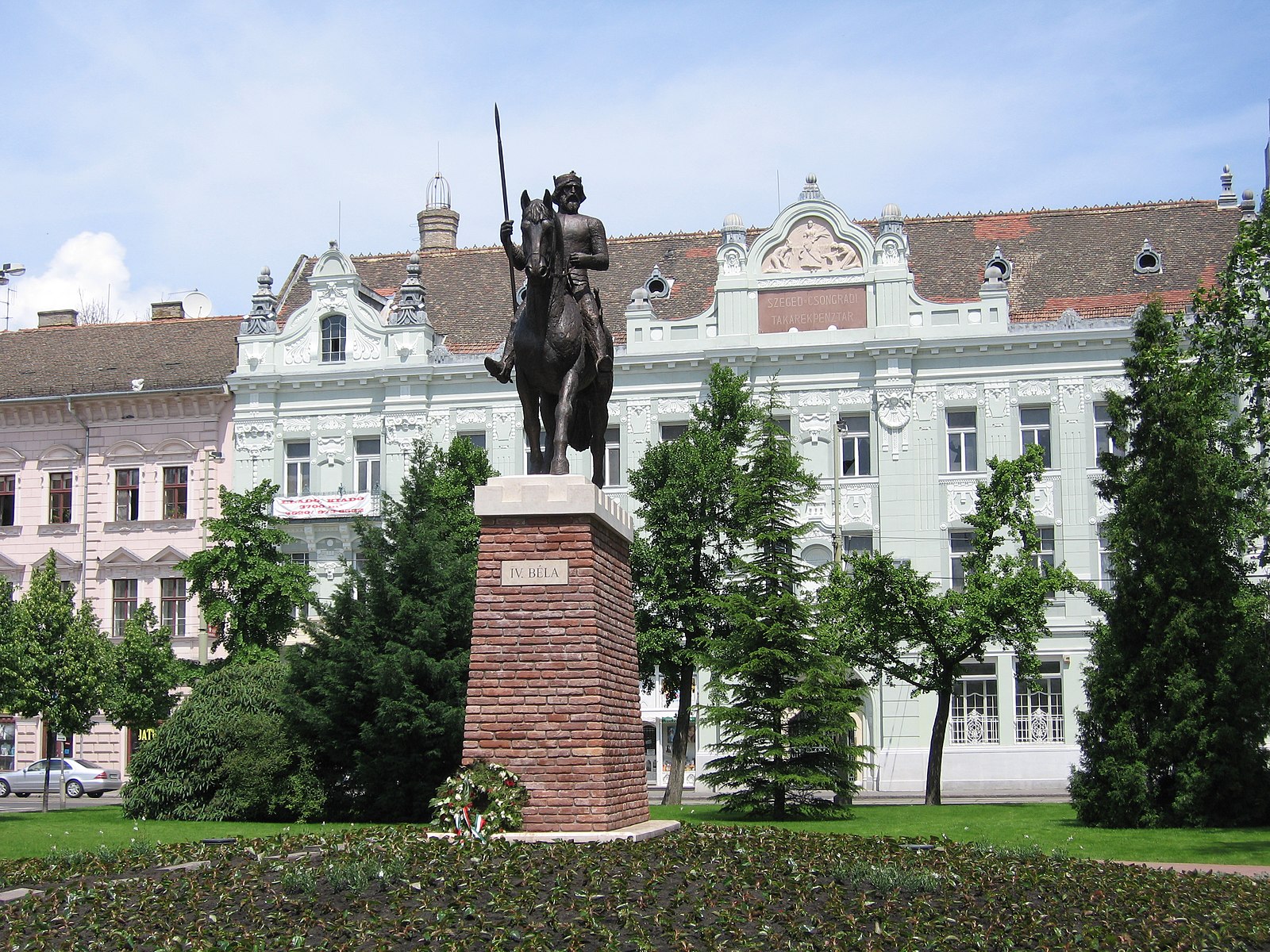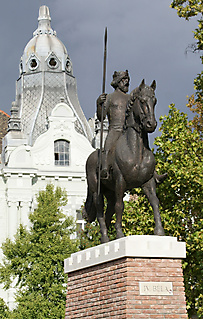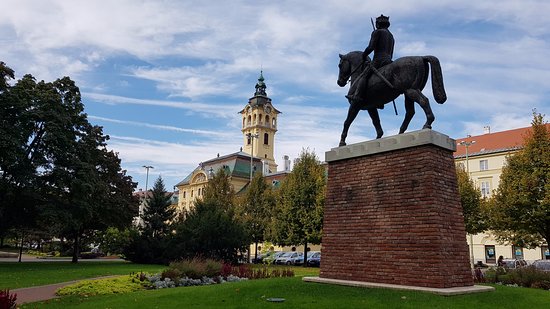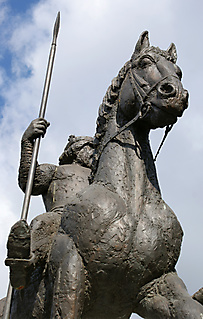- CountryHungary
- Town:Szeged
-
Year of creation:2010
- Rider(s):Béla IV
(1206 –1270) was King of Hungary and Croatia between 1235 and 1270, and Duke of Styria from 1254 to 1258. King Andrew died in 1235 and Béla succeeded him. He attempted to restore royal authority, which had diminished under his father. For this purpose, he revised his predecessors’ land grants and reclaimed former royal estates, causing discontent among the noblemen and the prelates.
The Mongols invaded Hungary and annihilated Béla’s army in April 1241. He escaped from the battlefield, but a Mongol detachment chased him from town to town as far as Trogir on the coast of the Adriatic Sea. Although he survived the invasion, the Mongols devastated the country before their unexpected withdrawal in March 1242. Béla introduced radical reforms in order to prepare his kingdom for a second Mongol invasion. He allowed the barons and the prelates to erect stone fortresses and to set up their private armed forces. He promoted the development of fortified towns. During his reign, thousands of colonists arrived from the Holy Roman Empire, Poland and other neighboring regions to settle in the depopulated lands. Béla’s efforts to rebuild his devastated country won him the epithet of “second founder of the state”.
Béla’s relationship with his oldest son and heir, Stephen, became tense in the early 1260s, because the elderly king favored his daughter Anna and his youngest child, Béla, Duke of Slavonia. He was forced to cede the territories of the Kingdom of Hungary east of the river Danube to Stephen, which caused a civil war lasting until 1266.
Béla and David Toth - Sculptor(s):Béla and David Tóth
Béla (1943) and David (1974) Tóth are Hungarian sculptors
Photo by Ferenc Somorjai












